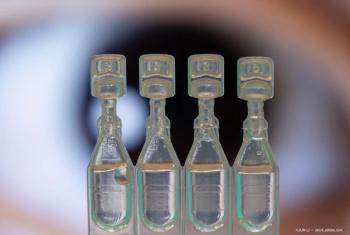
DSAEK is the latest advancement in corneal transplantation
Most patients had clear corneas after surgery and achieved a more rapid visual recovery.
The surgical technique
After completion of this step, the wound is enlarged to 5 mm. The donor tissue is folded to form a sodium hyalu-ronate "taco" (Healon, AMO) and is inserted still folded into the anterior chamber. He pointed out that he typically uses one stitch to close the incision. The tissue in some cases unfolds spontaneously and properly; in cases in which this does not occur, he inserts the I/A unit and unfolds the donor tissue. A second stitch is placed to close the wound and centers the tissue to the cornea.
"Once I am certain that the donor tissue is well centered, through the paracentesis, I insert a large air bubble that fills 100% of the anterior chamber. This process of centering may take a couple of maneuvers, but it is important that the tissue is centered correctly," Dr. Gorovoy explained.
Newsletter
Don’t miss out—get Ophthalmology Times updates on the latest clinical advancements and expert interviews, straight to your inbox.














































.png)


